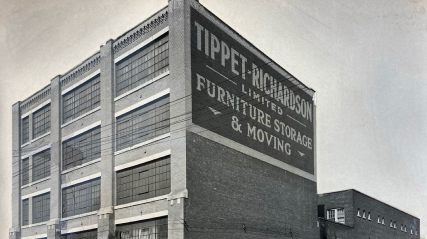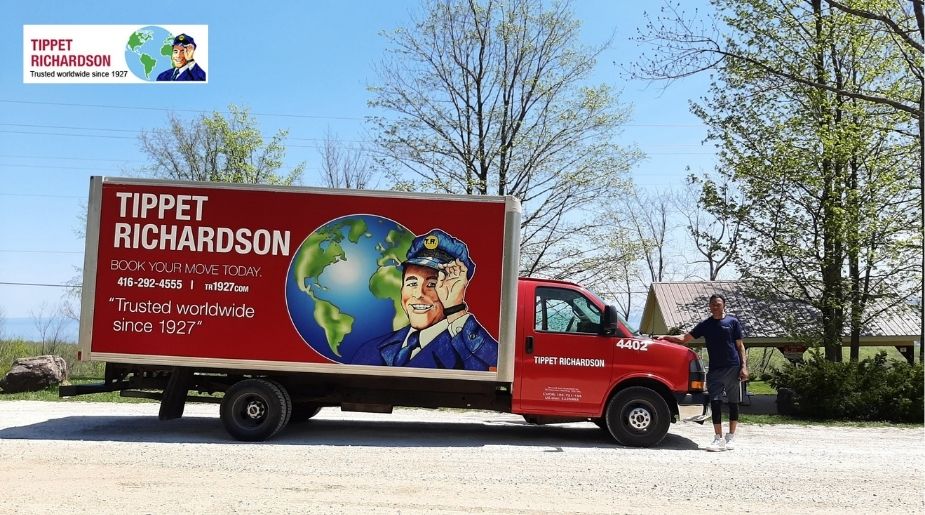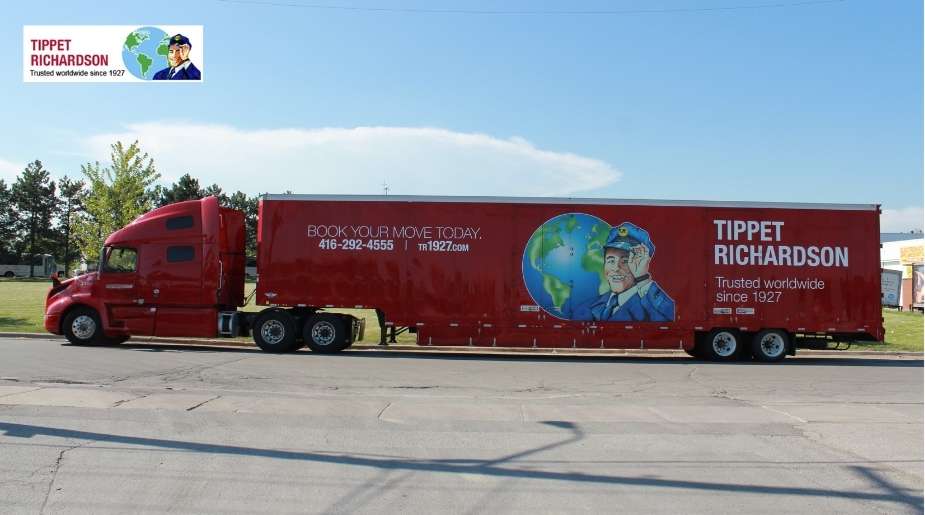Office relocation planning is a vital process for any business aiming to move its operations smoothly and efficiently. In a bustling city like Toronto, the complexity of relocating office equipment, furniture, and staff requires meticulous organisation and expert execution. That’s where Tippet Richardson comes in—a trusted local mover with nearly a century of experience in handling office moves with precision and care.
Successful office relocation planning starts with a clear understanding of all the moving components involved. From developing a workplace move timeline to coordinating with various departments and external service providers, each element must be carefully synchronised to avoid operational disruptions. Businesses often face tight schedules and limited windows for relocation, making efficient planning indispensable.
One of the key aspects of effective office relocation planning is establishing a realistic workplace move timeline. This timeline serves as a roadmap that outlines deadlines for packing, equipment disconnection, transportation, and setup at the new location. By staying on schedule, companies can minimise downtime and maintain productivity throughout the transition.
Equally important is expert office move coordination, which involves managing internal teams alongside professional movers to ensure each task is completed seamlessly. This includes clear communication among employees, IT specialists, and moving teams to handle delicate tasks such as technology migration and secure document handling. Tippet Richardson’s experience in office move coordination in Toronto adds valuable insight and responsiveness, ensuring challenges are anticipated and addressed promptly.
Considering the complexity of office relocation planning, many businesses benefit from partnering with experienced moving companies who understand the nuances of workplace moves. Tippet Richardson’s dedicated office moving services combine strategic planning with hands-on experience, offering tailored solutions that meet each company’s unique requirements. This partnership supports businesses in maintaining continuity and reduces the risks associated with rushed or uncoordinated moves.
As you explore this guide, you’ll learn essential aspects of office relocation planning, including how to define your move scope, the benefits of professional moving services, and strategies to overcome common challenges. With the right approach and expertise, your Toronto office move can be executed with confidence and minimal disruption.
Understanding the Essentials of Office Relocation Planning
Defining Office Relocation Planning
Office relocation planning is the strategic process of managing all aspects involved in moving a company’s physical workspace from one location to another. This comprehensive plan covers everything from logistical arrangements and packing protocols to staff communication and IT infrastructure transfer. Effective office relocation planning is critical because it minimises business interruptions, safeguards valuable assets, and ensures that employees transition smoothly into their new work environment. Without a detailed plan, companies risk costly delays, lost equipment, and reduced productivity, all of which can seriously impact operations.
The process begins with carefully assessing the scale and nature of the move, identifying key milestones, and establishing a synchronised timeline. Each stage demands clear objectives and thorough coordination between internal teams and external vendors. Especially in a busy metropolitan area like Toronto, office relocation planning must account for local regulations, building access restrictions, and traffic conditions, adding layers of complexity that require experienced navigation.
Benefits of Professional Office Moving Services
Partnering with seasoned office movers like Tippet Richardson brings significant advantages to your office relocation planning. Professionals understand the intricate details of coordinating a workplace move timeline, facilitating smooth packing, transport, and setup phases. They offer specialised equipment and handling techniques tailored to delicate office technology and bulky furniture, reducing the risk of damage.
Experienced movers also provide invaluable project management support. Their expertise helps identify potential challenges early, introduce efficient workflows, and allocate resources optimally. Leveraging local knowledge of Toronto’s commercial moving landscape ensures compliance with municipal requirements, permits, and parking regulations. This holistic approach dramatically diminishes downtime, allowing your business to resume operations quickly after the move.
Moreover, professional office moving services provide customised solutions that fit your company’s size, industry, and timeline. Tippet Richardson, with a strong legacy since 1927, combines traditional reliability with modern moving innovations, making them a trusted partner in office move coordination. Their team communicates transparently, keeping all stakeholders aligned to the relocation objectives.
Key Challenges in Office Moves
Office moves often face unique challenges that set them apart from residential moves. One major obstacle is coordinating the migration of complex IT systems and sensitive equipment without disrupting day-to-day business functions. This challenge necessitates detailed planning and staggered scheduling to avoid downtime.
Another common issue is managing employee involvement and morale during the transition. Sudden changes or poorly communicated processes can lead to confusion and frustration. Incorporating clear communication strategies as part of the office move coordination helps keep staff informed and engaged throughout the relocation.
Logistics also pose challenges, from navigating narrow corridors and tight elevators to adhering to building access policies, loading dock schedules, and traffic considerations in a city like Toronto. These factors can cause unexpected delays if not anticipated.
Lastly, incomplete or inaccurate inventory and poor packing can result in lost items or damage to essential office property. Meticulous documentation and systematic packing procedures are crucial components of office relocation planning to overcome this.
By recognising and addressing these obstacles through expert office relocation planning, businesses can execute a move that safeguards assets, maintains productivity, and fosters a positive transition to the new workspace. Tippet Richardson’s extensive experience ensures these challenges are managed effectively, allowing your Toronto office move to proceed without unnecessary setbacks.
Creating an Effective Workplace Move Timeline
Assessing Your Current Office Setup
A successful workplace move timeline originates with a thorough assessment of your current office setup. This involves conducting a detailed inventory of all office assets, including furniture, technology, documents, and supplies. Identifying what items will be relocated, what should be replaced or discarded, and what stays behind is crucial. Understanding workspace configurations and departmental needs helps prioritise what must be unpacked first in the new location.
Involving department heads and end users in this assessment ensures nothing vital is overlooked. For example, IT equipment and sensitive files often require special attention, while outdated furniture might be better left behind. This early step in office relocation planning sets the stage for an organised move by clarifying the scope and scope limitations.
Establishing Move Deadlines and Milestones
With a clear inventory in place, the next step is to set realistic deadlines and key milestones that define your workplace move timeline. Selecting the moving date should consider business cycles to lessen impact—weekends or after-hours may be preferable for some companies. Divide the relocation into phases such as packing, transport, and setup, assigning specific deadlines for each.
Milestones might include completing employee packing, disconnecting IT systems, or finishing furniture installation. Integrating these checkpoints keeps the move on track and enables early detection of potential delays. Well-defined deadlines also facilitate communication with employees and the moving team, keeping everyone aligned with the overall plan.
Allocating Resources and Assigning Roles
Effective office relocation planning requires assigning responsibilities both internally and externally. Designate move leaders for each department who oversee packing, documentation, and communication. Internally, ensure employees understand their roles, whether it’s labelling boxes or preparing workstations.
Coordinate closely with moving professionals like Tippet Richardson, integrating their timelines with your internal schedules. Their expertise in office move coordination helps optimise resource allocation, ensuring experienced crews handle critical tasks. This collaboration smooths workflows, avoids duplication, and reduces the likelihood of overlooked items or bottlenecks.
Contingency Planning for Unexpected Delays
Even the best-planned office moves can encounter unforeseen challenges. That’s why building contingency plans into your workplace move timeline is essential. Consider potential disruptions such as inclement weather, elevator scheduling conflicts, or last-minute changes in move dates.
Develop alternative options like flexible moving windows or backup teams that can expedite particular phases if needed. Communicate contingency plans to all stakeholders so they understand how potential issues will be managed. This proactive approach minimises stress and downtime, ensuring your Toronto office move progresses smoothly despite uncertainties.
By carefully assessing your office setup, setting meaningful deadlines, assigning clear roles, and preparing contingencies, your office relocation planning will be positioned for success. With these foundations in place, you’re ready to advance into detailed office move coordination strategies that guarantee a seamless transition.
Office Move Coordination Strategies for a Seamless Transition
Selecting the Right Toronto Office Movers
Choosing the proper mover is a cornerstone of effective office relocation planning. For Toronto businesses, the ideal moving company should not only have extensive experience but also deep local knowledge. Tippet Richardson stands out in this regard, bringing nearly 100 years of specialised office moving expertise to every project. When selecting movers, consider their track record with office relocations, their ability to handle sensitive equipment, and their familiarity with Toronto’s unique logistical challenges such as congested downtown streets, building regulations, and permit requirements.
Tippet Richardson’s reputation is built on precision and reliability, with a team trained to manage complex office moves efficiently. Their tailored approach ensures that your workplace move timeline is respected, helping you meet deadlines without sacrificing care or safety.
Communication and Collaboration Among Teams
Clear communication is vital in office move coordination to keep all stakeholders on the same page. Employees should receive timely updates about the move schedule, packing guidelines, and expectations. Engaging staff early alleviates anxiety and encourages participation, which improves packing accuracy and expedites setup in the new location.
Collaborative planning sessions involving moving professionals, IT staff, department leaders, and facility managers promote transparency and shared responsibility. Encouraging feedback identifies potential pain points and allows adjustments before the move day. This collective approach reduces confusion on moving day and contributes to a more seamless transition.
Managing Technology and Equipment Relocation
Moving technology and office equipment demands special attention within any office relocation planning strategy. IT infrastructure is often sensitive and critical to daily operations, meaning downtime must be minimised or eliminated. Begin by conducting a comprehensive inventory of all hardware, software, and networking components.
Coordinate with internal IT teams and your Toronto office movers to develop a phased disconnect, move, and reconnect plan. Label devices clearly and use appropriate packaging materials to prevent damage. Some firms benefit from offsite temporary setups or parallel system testing to ensure operational readiness once relocated. Experienced movers like Tippet Richardson are adept at handling fragile equipment, providing safe transport, and synchronising delivery schedules with technology teams to avoid costly interruptions.
Furniture and Workspace Setup Planning
Beyond transporting items, office relocation planning also includes intentional workspace design in the new location. Effective office move coordination involves mapping out the placement of furniture, workstations, and meeting rooms to align with operational workflows and employee needs.
Working closely with moving professionals, facilities staff, and HR leads to optimise the new Office layout for comfort, productivity, and compliance with health and safety standards. Detailed floor plans should be developed and shared ahead of time, allowing movers to unpack and assemble efficiently. Thoughtful setup minimises downtime and helps employees settle quickly in their new environment.
Handling Documentation and Legal Compliance
An often overlooked but critical part of office move coordination is managing all necessary documentation and legal requirements. This includes securing building permits, elevator bookings, parking approvals, and ensuring compliance with Toronto’s municipal regulations.
Insurance coverage must be verified and appropriate for the move’s scale and contents, protecting against damages or losses. Working with experienced Toronto movers like Tippet Richardson ensures these administrative tasks are handled professionally, reducing liability and potential delays. A comprehensive move plan incorporates these details to keep the relocation compliant and smooth from a regulatory perspective.
By integrating these office move coordination strategies—choosing the right movers, fostering communication, managing technology transfer carefully, planning workspace setup, and overseeing legal requirements—your office relocation planning will culminate in a seamless and stress-free transition for your Toronto business.
Read also: How to Select the Right Office Movers in North York
Tips to Minimise Downtime and Disruption During Your Office Move
Scheduling Moves Outside of Business Hours
One of the most effective tactics in office relocation planning to minimise disruption is scheduling the move outside of normal business hours. Relocating during evenings, nights, or weekends allows your team to maintain regular operations without interruption, preserving productivity and customer service. This scheduling strategy is especially advantageous in busy Toronto environments where weekday traffic and building access constraints can add delays.
After-hours moves also enable movers and staff to focus entirely on packing, transporting, and setting up without competing with daily office activities. This separation between moving logistics and business functions promotes a smoother workflow and reduces stress for everyone involved. By coordinating with experienced Toronto office movers like Tippet Richardson, you can plan and execute after-hours transitions efficiently, leveraging their expertise in navigating local time restrictions and requirements.
Efficient Packing and Labeling Practices
Clear, systematic packing and labelling are cornerstones of effective office relocation planning. When boxes and equipment are packed methodically and labelled accurately, unpacking and setup in the new office happen faster and with less confusion. Implement colour-coded labels or numbering systems that correspond to departments, priority levels, or specific workstations.
Include detailed inventories on each box, especially for delicate electronics and documentation. Training employees on packing protocols and providing uniform packing materials helps maintain consistency. Professional movers like Tippet Richardson often supplement internal efforts with specialised packing services, ensuring fragile or high-value items are protected.
This organised approach minimises lost items, prevents unpacking delays, and accelerates the overall workplace move timeline—critical factors to reduce downtime during your Toronto office move.
Post-Move Support and Troubleshooting
The office move doesn’t truly end once furniture and equipment are delivered. Providing dedicated post-move support is a vital stage within office relocation planning to ensure rapid recovery and operational stability. Promptly addressing issues such as missing items, IT system glitches, or workspace misconfigurations prevents extended disruptions.
Collaborate closely with your movers and internal teams for troubleshooting immediately after relocation. Tippet Richardson offers continued assistance beyond transport, helping with problem-solving and follow-up services to smooth out any rough edges. Clear communication channels should be maintained so staff know where to report concerns and receive timely responses.
An organised post-move support plan reassures employees, accelerates acclimation to the new space, and contributes to a successful transition with minimal downtime — essential for Toronto businesses relying on uninterrupted productivity.
Read Also: Server Room Movers in Richmond Hill
Wrapping Up
Successfully navigating office relocation planning involves much more than simply moving furniture and equipment. It requires carefully crafted timelines, seamless coordination among staff and movers, and expert guidance to address the myriad challenges that arise during an office move. Toronto businesses facing this complex process can rely on Tippet Richardson’s nearly 100 years of experience to lead them through each phase with confidence and professionalism.
From the initial assessment of your existing office layout to the final setup in your new workspace, Tippet Richardson provides tailored office move coordination designed to fit your company’s specific needs and schedule. Their deep understanding of Toronto’s unique logistical landscape ensures practical solutions for tight deadlines, regulatory requirements, and busy urban environments.
By entrusting your workplace move timeline and overall relocation planning to seasoned professionals, you gain not only operational continuity but also peace of mind. Tippet Richardson’s commitment to precision and care means your office transition will minimise downtime, reduce employee disruption, and position your new location for immediate success.
In an increasingly competitive business climate, effective office relocation planning is a strategic investment that safeguards productivity and supports growth. Whether upgrading to a larger space, consolidating branches, or refreshing your workplace environment, partnering with Tippet Richardson ensures your Toronto move is smooth, efficient, and stress-free—setting the stage for a bright new chapter in your company’s journey.





